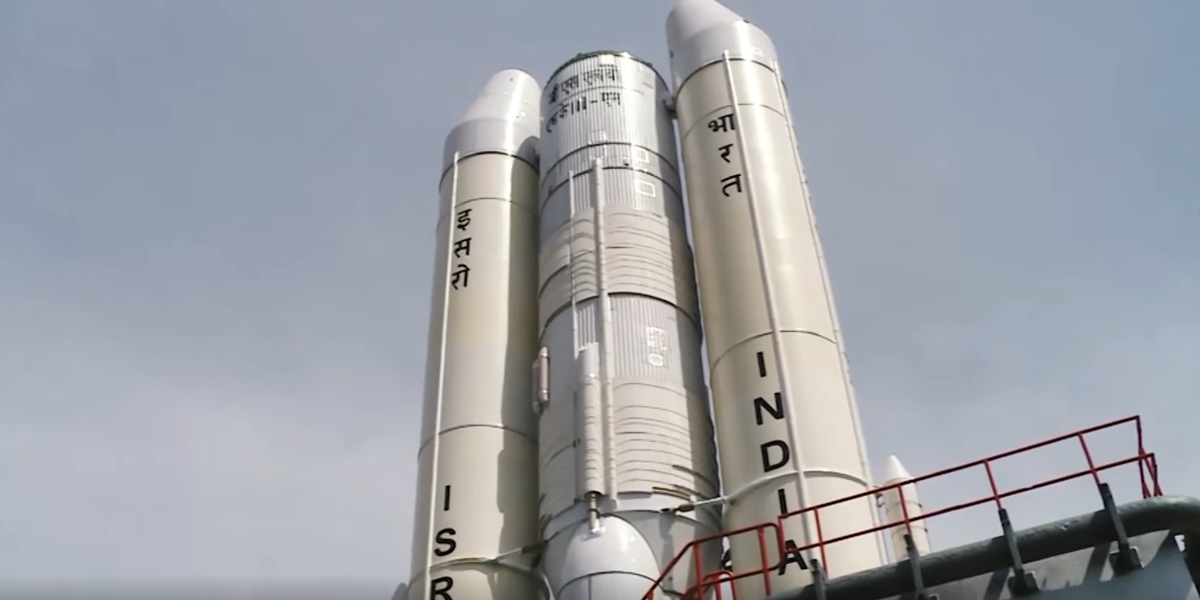In a bid to take India’s dream of interplanetary explorations one step ahead, the Indian Space Research Organisation (ISRO) is all set to launch Chandrayaan-3 in June 2023. Chandrayaan-3 will be ISRO’s third mission to the moon and one of the most ambitious space projects of the year. ISRO Chairman S Somanath while speaking to the media during an event revealed, “Chandrayaan-3 (C-3) launch will be in June next year onboard the Launch Vehicle Mark-3 (LVM3).”
Apart from disclosing the timeline for Chandrayaan-3, ISRO officials also lined up plans for the country’s first human spaceflight. The first test flight of the ‘abort mission for Gaganyaan is scheduled for a launch early next year. This is in line with India’s next ambitious space mission, which involves for the first time flying Indian astronauts into orbit by the end of 2024.
As per reports, ISRO is planning to carry out six test flights before it goes ahead and launches the first human spaceflight in 2024. Somanath didn’t shy away from revealing that one of the country’s most awaited space missions Gaganyaan is rightfully progressing at an expected slow and steady pace.
Also Read: ISRO Launches First Private Rocket with Flying Colours
Let’s take a quick look at how 2023 is planned for ISRO.
What We Know About Chandrayaan-3 So Far
Chandrayaan-3 is the mission to the moon proposed and planned after the unfortunate soft landing failure of Chandrayaan-2.
Chandrayaan-2 was ISRO’s second lunar exploration mission launched in 2019 after the completion of the previous mission, Chandrayaan-1. On 22 July 2019, the C-2 spacecraft was launched from the Satish Dhawan Space Centre, Andhra Pradesh on a mission to the Moon. The ultimate mission was to explore and study the lunar surface composition along with detecting the lunar water location.
The C-2 spacecraft was carrying a lunar orbiter and India’s indigenously developed Vikram lander and Pragyan lunar rover. Although the craft successfully reached Moon’s orbit and started orbital operations needed for the preparation for the soft landing of Vikram lander, due to some software glitch the lander deviated from its trajectory losing the momentum to finally facing a crash at landing.

Chandrayaan-3 since then have become ISRO’s next project to re-attempt a soft landing on the lunar surface in 2023 and complete the lunar objectives set for C-2.
The major difference between Chandrayaan-2 and Chandrayaan-3 would be the absence of an orbiter. Chandrayaan-3 will not have an orbiter and will only carry a lander and a rover to the moon.
Also Read: ISRO to Conduct First Test Flight of Gaganyaan Mission in February Next Year
On the design front, Chandrayaan-3 is programmed to have some design changes as well.
The Chandrayaan-3 lander will have only four throttle-able engines. This is different from Vikram lander on Chandrayaan-2, which had five 800 Newtons engines. The fifth engine on Chandrayaan-2 was centrally mounted with a fixed thrust. Moreover, the lander of the proposed Chandrayaan-3 craft will also be equipped with a Laser Doppler Velocimeter (LDV).
“C-3 is ready now. It is not a replica of C-2. The rover is there. The engineering is significantly different. We have made it more robust so that it does not have problems like last time,” Somanath added during his interactions with the media personnel.
About the Abort Missions
Abort missions are test flights where the space crew needs to abort the mission in case of a system or other failure. The crew in that case needs to escape the spacecraft in the middle of an ongoing flight. An Abort Mission is basically a test flight that is designed for the crew to practice how to manage a space escape in case of failures. Through these missions, ISRO will be testing the systems with the crew before planning the launch of human spaceflights.
According to ISRO’s updated brief, the Gaganyaan mission is envisaging a manned spaceflight to Low Earth Orbit (LEO) for the first time by Indian space scientists and astronauts. This mission, when performed successfully, will play an instrumental role as the foundation stone for a future Indian human space exploration programme.
Speaking of the first test flight of the abort mission for Gaganyaan planned for early next year, Somanath said, “If this is successful, we will repeat it once again and then we will go for an unmanned mission. The unmanned mission will be a full-fledged rocket. It will go to orbit, then it will come back.”
Also Read: Addressing revolution on the anvil: Pataa to use ISRO’s tech to introduce navigation solutions
